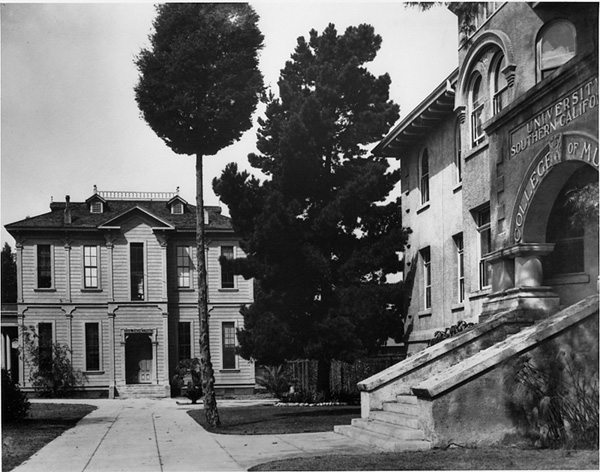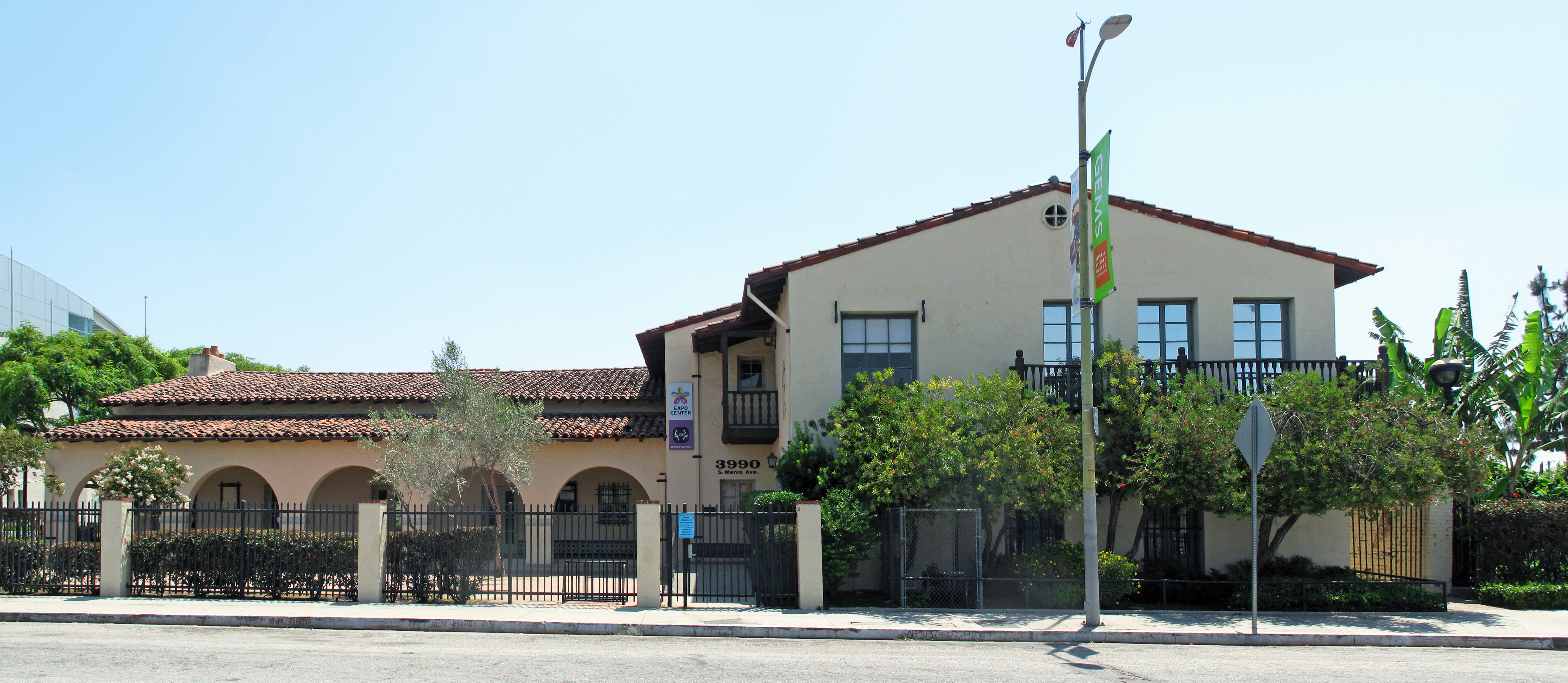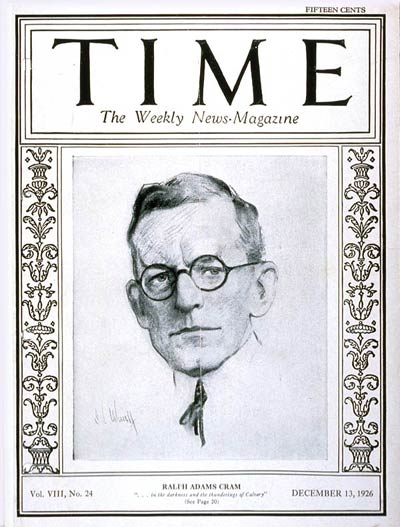|
Campus Of The University Of Southern California
The Campus of the University of Southern California, also known as the University Park Campus is located in the Exposition Park neighborhood of Los Angeles, California. The campus sprawls across 226 acres and contains most of the academic facilities and residential buildings of the University of Southern California. The University Park campus is in the University Park district of Los Angeles, 2 miles (3.2 km) southwest of downtown Los Angeles. The campus's boundaries are Jefferson Boulevard on the north and northeast, Figueroa Street on the southeast, Exposition Boulevard on the south, and Vermont Avenue on the west. Since the 1960s, through-campus vehicle traffic has been either severely restricted or entirely prohibited on some thoroughfares. The University Park campus is within walking distance to Los Angeles landmarks such as the Shrine Auditorium and Los Angeles Memorial Coliseum, which is operated and managed by the University. Most buildings are in the Romanesque Revival ... [...More Info...] [...Related Items...] OR: [Wikipedia] [Google] [Baidu] |
Exposition Park (Los Angeles)
Exposition Park is a in the south region of Los Angeles, California, in the Exposition Park neighborhood. Established in 1872 as an agricultural fairground, the park includes the Los Angeles Memorial Coliseum, Banc of California Stadium, the California Science Center, the Natural History Museum of Los Angeles County, and the California African American Museum. The Lucas Museum of Narrative Art is under construction. Bounded by Exposition Boulevard to the north, South Figueroa Street to the east, Martin Luther King Jr. Boulevard to the south and Vermont Avenue to the west, it is directly south of the main campus of the University of Southern California. The park is public open space, managed by the Sixth District Agricultural Association. Features Exposition Park houses the following: * LA84 Foundation/John C. Argue Swim Stadium * Banc of California Stadium ** Home of Los Angeles FC * Lucas Museum of Narrative Art (under construction) * Los Angeles Memorial Coliseum ** ... [...More Info...] [...Related Items...] OR: [Wikipedia] [Google] [Baidu] |
Ralph Carlin Flewelling
Ralph Carlin Flewelling (May 4, 1894 – December 30, 1975) was an American architect. He designed many buildings in Los Angeles County, California. Early life Flewelling was born on May 4, 1894, in St. Louis, Michigan. His father was Ralph Tyler Flewelling. He graduated from Wesleyan University in Middletown, Connecticut and he received a Master's degree from the Massachusetts Institute of Technology in Cambridge, Massachusetts in 1917. Career Flewelling started his career as a draftsman for Henry M. Patterson, a Los Angeles-based architect, from 1921 to 1923. He then worked for William Lee Woollett (1874-1955) from 1924 to 1925. He opened his own architectural practise in 1925. Flewelling designed the Hawthorne School in Beverly Hills, California in 1928. He designed the Electric Fountain in Beverly Hills in 1931. He also designed the post office in Beverly Hills in 1932 and 1933. Later, he designed the city hall and police station in Newport Beach, California in 1949. ... [...More Info...] [...Related Items...] OR: [Wikipedia] [Google] [Baidu] |
University Of Oxford
, mottoeng = The Lord is my light , established = , endowment = £6.1 billion (including colleges) (2019) , budget = £2.145 billion (2019–20) , chancellor = The Lord Patten of Barnes , vice_chancellor = Louise Richardson , students = 24,515 (2019) , undergrad = 11,955 , postgrad = 12,010 , other = 541 (2017) , city = Oxford , country = England , coordinates = , campus_type = University town , athletics_affiliations = Blue (university sport) , logo_size = 250px , website = , logo = University of Oxford.svg , colours = Oxford Blue , faculty = 6,995 (2020) , academic_affiliations = , The University of Oxford is a collegiate research university in Oxf ... [...More Info...] [...Related Items...] OR: [Wikipedia] [Google] [Baidu] |
William Pereira
William Leonard Pereira (April 25, 1909 – November 13, 1985) was an American architect from Chicago, Illinois, who was noted for his futuristic designs of landmark buildings such as the Transamerica Pyramid in San Francisco. Remarkably prolific, he worked out of Los Angeles, and was known for his love of science fiction and expensive cars, but mostly for his unmistakable style of architecture, which helped define the look of mid-20th century America. Personal life Pereira was born in Chicago, Illinois, the son of Sarah (Friedberg) and Saul Pereira. His paternal grandfather was of Portuguese Sephardi Jewish ancestry, and his other grandparents were Ashkenazi Jews. Pereira graduated from the School of Architecture, University of Illinois and began his career in his home city. He had some of his earliest architectural experience helping to draft the master plan for the 1933 "A Century of Progress" Chicago World's Fair. With his brother, Hal Pereira, he designed the Esquire T ... [...More Info...] [...Related Items...] OR: [Wikipedia] [Google] [Baidu] |
Norman Topping
Norman Topping (1908 – 18 November 1997) was the President of the University of Southern California between 1958 and 1970. He succeeded Fred D. Fagg, Jr., and was succeeded by John R. Hubbard. He was chancellor between 1971 and 1980. He became emeritus chancellor in 1980. While President of USC, Topping announced an ambitious "Master Plan for Enterprise and Excellence in Education." As part of the execution of the plan, USC's University Park Campus grew from 95 to 150 acres. Several dozen temporary buildings were replaced with permanent structures. In sum, it was the largest expansion of USC's physical campus, and helped pave the way for future expansion of USC's research mission. Also during Topping's presidency, USC joined the Association of American Universities an important symbolic step toward USC's increasing recognition as a top tier research university. Dr. Topping was an BA and MD alumnus of USC and worked at the U.S. Public Health Service on the typhus vaccine used ... [...More Info...] [...Related Items...] OR: [Wikipedia] [Google] [Baidu] |
USC VKC Building
USC most often refers to: * University of South Carolina, a public research university ** University of South Carolina System, the main university and its satellite campuses **South Carolina Gamecocks, the school athletic program * University of Southern California, a private research university ** USC Trojans, the school athletic program USC may also refer to: Government * United Somali Congress (1987–2004), a former major rebel organization * United States Code, the official code of United States federal law * United States Congress, the law-making body of the United States government * Universal Social Charge, an income tax in Ireland * Utility Stores Corporation, a Pakistani state-owned store chain Law enforcement * Ulster Special Constabulary, a former reserve police force in Northern Ireland * United States Constabulary (1946–1952), the security force of the U.S. Occupation Zone of West Germany Sports * UEFA Super Cup, an annual association football super cup match * ... [...More Info...] [...Related Items...] OR: [Wikipedia] [Google] [Baidu] |
New Formalism (architecture)
New Formalism is an architectural style that emerged in the United States during the mid-1950s and flowered in the 1960s. Buildings designed in that style exhibited many Classical elements including "strict symmetrical elevations"Wiffen, Marcus, American Architecture Since 1780: A Guide to the Styles, The M.I.T. Press, Cambridge Massachusetts, 1969 building proportion and scale, Classical columns, highly stylized entablatures and colonnades. The style was used primarily for high-profile cultural, institutional and civic buildings. Edward Durrell Stone's New Delhi American Embassy (1954), which blended the architecture of the east with modern western concepts, is considered to be the symbolic start of New Formalism architecture. Common features of the New Formalism style include: * Use of traditionally rich materials such as travertine, marble, and granite or man-made materials that mimic their luxurious qualities * Buildings usually set on a podium * Designed to achieve modern m ... [...More Info...] [...Related Items...] OR: [Wikipedia] [Google] [Baidu] |
Rufus B
Rufus is a masculine given name, a surname, an Ancient Roman cognomen and a nickname (from Latin ''rufus'', "red"). Notable people with the name include: Given name Politicians * Rufus Ada George (born 1940), Nigerian politician * Rufus Aladesanmi III (born 1945), Yoruban king * Rufus Applegarth (1844–1921), American lawyer and politician * Rufus A. Ayers (1849–1926), American lawyer, businessman, and politician * Rufus Barringer (1821–1895), American lawyer, politician, and military general * Rufus Blodgett (1834–1910), American politician and railroad superintendent * Rufus Bousquet (born 1958), Saint Lucian politician * Rufus E. Brown (1854–1920), Vermont attorney, farmer, and politician * Rufus Bullock (1834–1907), American politician * Rufus Carter (1866–1932), Canadian farmer and political figure * Rufus Cheney Jr., member of the Wisconsin State Assembly during the 1850 session * Rufus W. Cobb (1829–1913), American politician * Rufus Curry (1859–19 ... [...More Info...] [...Related Items...] OR: [Wikipedia] [Google] [Baidu] |
PWA Moderne
The Art Deco style, which originated in France just before World War I, had an important impact on architecture and design in the United States in the 1920s and 1930s. The most famous examples are the skyscrapers of New York City including the Empire State Building, Chrysler Building, and Rockefeller Center. It combined modern aesthetics, fine craftsmanship and expensive materials, and became the symbol of luxury and modernity. While rarely used in residences, it was frequently used for office buildings, government buildings, train stations, movie theaters, diners and department stores. It also was frequently used in furniture, and in the design of automobiles, ocean liners, and everyday objects such as toasters and radio sets. In the late 1930s, during the Great Depression, it featured prominently in the architecture of the immense public works projects sponsored by the Works Progress Administration and the Public Works Administration, such as the Golden Gate Bridge and Hoover Da ... [...More Info...] [...Related Items...] OR: [Wikipedia] [Google] [Baidu] |
USC Viterbi School Of Engineering
The USC Viterbi School of Engineering (formerly the USC School of Engineering) is the engineering school of the University of Southern California. It was renamed following a $52 million donation by Andrew J. Viterbi, co-founder of Qualcomm. With over $135 million in external funding support, the school is among the nation's highest in volume of research activity. The Viterbi School of Engineering is currently ranked No. 9 in the United States by '' U.S. News & World Report''. The school is headed by Dean Yannis Yortsos. Its research centers have played a major role in development of multiple technologies, including early development of the Internet when USC researcher Jonathan Postel was an editor of communications-protocol for the fledgling internet, also known as ARPANET. The school's faculty has included Irving Reed, Leonard Adleman, Solomon W. Golomb, Barry Boehm, Clifford Newman, Richard Bellman, Lloyd Welch, Alexander Sawchuk, and George V. Chilingar. Major resear ... [...More Info...] [...Related Items...] OR: [Wikipedia] [Google] [Baidu] |
Ralph Adams Cram
Ralph Adams Cram (December 16, 1863 – September 22, 1942) was a prolific and influential American architect of collegiate and ecclesiastical buildings, often in the Gothic Revival style. Cram & Ferguson and Cram, Goodhue & Ferguson are partnerships in which he worked. Cram was a fellow of the American Institute of Architects. Early life Cram was born on December 16, 1863, at Hampton Falls, New Hampshire, to William Augustine and Sarah Elizabeth Cram. He was educated at Augusta, Hampton Falls, Westford Academy, which he entered in 1875, and Phillips Exeter Academy. At age 18, Cram moved to Boston in 1881 and worked for five years in the architectural office of Rotch & Tilden, after which he left for Rome to study classical architecture. From 1885 to 1887, he was art critic for the ''Boston Transcript''. During an 1887 Christmas Eve mass in Rome, he had a dramatic conversion experience. For the rest of his life, he practiced as a fervent Anglo-Catholic who identified as high-ch ... [...More Info...] [...Related Items...] OR: [Wikipedia] [Google] [Baidu] |








